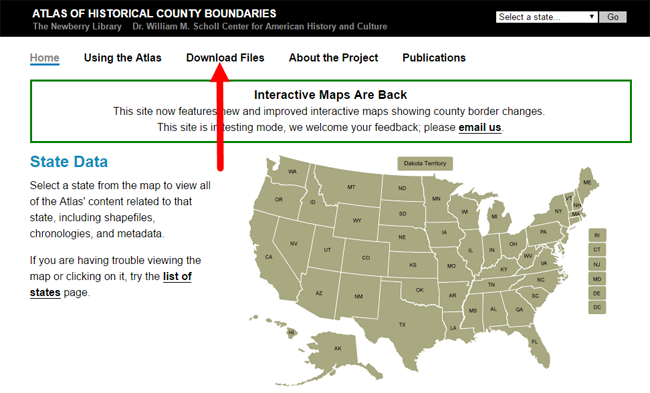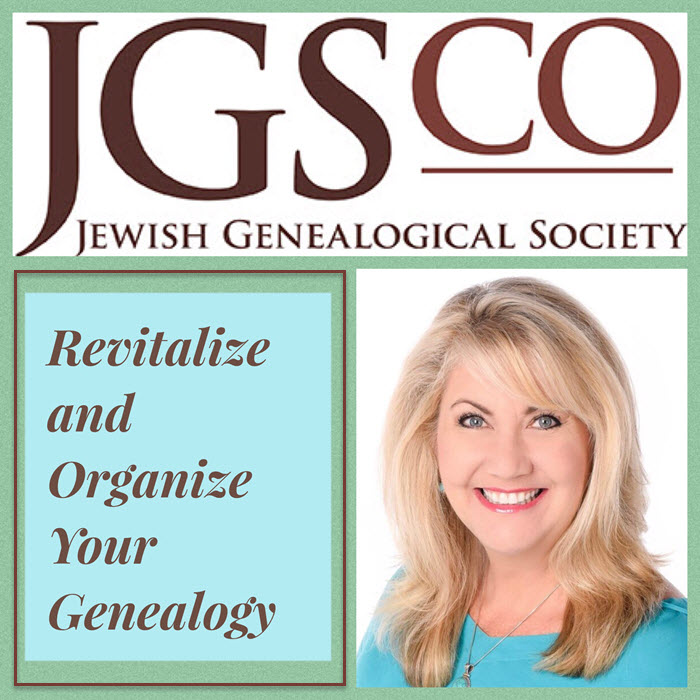by Lisa Cooke | Sep 10, 2016 | 01 What's New, Maps, United States |
The online Atlas of Historical County Boundaries is a go-to resource for determining old U.S. county boundaries.

The atlas of historical county boundaries
How to find county boundaries with the Atlas of Historical County Boundaries in three steps
1. From the Atlas home page, click on the state of interest from the national interactive map.
2. From the state page, click on View Index of Counties and Equivalents. This will show you all current and past county names.
3. From this page, click on your targeted county. You’ll find a timeline of that county’s boundary changes.

Use the timeline to discover what county your ancestors belonged to at any given time. Perhaps you’ll discover you should actually be looking for an ancestor’s marriage record or probate in a parent county, one that existed there before the current county, or in a successor county later carved out of this one.
Google Earth Bonus: The Atlas of Historical Boundary Changes state pages include downloadable maps compatible with Google Earth and Google Maps. If you are not using Google Earth for genealogy yet, watch Lisa Louise Cooke’s free video to see how and why you want to use this amazing 3D map of the world for your family history! You can learn more about downloading the Atlas of Historical County Boundaries files to Google Earth in Lisa’s book The Genealogist’s Google Toolbox.

Learn More about Using Interactive Maps for Genealogy
by mbarker | May 21, 2018 | 01 What's New, Archive Lady |
Did you know that some museums also house archives? Yes, that’s right! Museums aren’t just for artifacts and historical objects. They sometimes house documents, photographs, and ephemera. Here’s how to learn about archives at your favorite museums...
by Lisa Cooke | Sep 18, 2017 | 01 What's New, Conferences
Do you want to revitalize your genealogy energy, boost your online research skills, and better organize your many family history discoveries? Join Lisa Louise Cooke at the “Reinvigorate Your Research” all-day seminar in Denver, Colorado, hosted by the Jewish Genealogical Society of Colorado.

Genealogists seem to face some universal challenges. Like, how to research online more effectively and efficiently. How to organize what you find (especially when discoveries are spread across various websites and in paper files). Knowing which technology tools to invest in, and how to master them. Genealogy and technology expert Lisa Louise Cooke can help you with all these challenges–in person, in fact, at this upcoming all-day event in Denver, Colorado.
Organize Your Genealogy, Revitalize Your Research
Here’s what you’ll want to know about this event:
What: “Reinvigorate Your Research with Lisa Louise Cooke:” Annual All-Day Seminar by JGSCO
Where: Jewish Community Center, Social Hall, 350 S. Dahlia St, Denver
When: Sunday, October 15, 9:00 am – 3:30 pm (doors open at 8:00 am for registration)
Hosted by: Jewish Genealogical Society of Colorado
Registration: Register online by October 9, 2017
BONUS: Cost of admission ($20 members/$35 nonmembers) includes continental-style breakfast, snacks, and a Kosher buffet-style lunch.
Lisa’s host, The Jewish Genealogical Society of Colorado, has chosen a fantastic lineup of Lisa’s lectures that really do hit on all those pain points we have. Here’s what classes you’ll get to enjoy all day on Sunday, October 15:

How to Organize All this Genealogy Stuff! Save yourself future frustration and disappointment by putting a solid genealogy organizational plan in place for all the types of items that will be coming your way.
- Organizing All This Paper! The Physical Items Organization System
- Organizing All That Genealogical Data! The Family Tree Data Organization System
- Organizing All These Digital Files! The Digital Organization System
- Organizing All that Web Information! The Online Notetaking System
Google Search and Google Books: Tools for Every Day. Discover Google search tools and new ways for using them to solve the genealogical challenges you face. Learn the secrets of getting more than you ever imagined from the largest online collection of digitized books–Google Books. With 25 million books, many of which are digitized and fully searchable, Google Books should be the first place to which you turn as you climb your family tree. Learn how to make the most of this goldmine chock full of historical data with little-known techniques.
Time Travel with Google Earth. Get ready to experience old historic maps, genealogical records, images, and videos coming together to create stunning time travel experiences in the free Google Earth program. We’ll incorporate automated changing boundaries, and uncover historic maps that are built right into Google Earth. Tell time travel stories that will truly excite your non-genealogist relatives! You’ve never seen anything like this class!
Future Technology and Genealogy: 5 Strategies You Need. Envision your genealogy as technology speeds ahead into the future. There are five key strategies that you can employ right now that will make the ride easier and the results more exciting than ever. Discover the paradigm shift that will make it easy to find the right technology for your needs and learn how to capitalize on how technology is changing the flow of information.
Bring Lisa Home with You
 I’m sorry if you’ll miss this event–Lisa’s seminar attendees always leave with a new list of strategies they can’t wait to try. (I’ve actually seen people sneak onto their devices during her presentations and start trying the apps, search strategies, and tools she’s talking about. It’s like they can’t wait after she shows them what’s possible.)
I’m sorry if you’ll miss this event–Lisa’s seminar attendees always leave with a new list of strategies they can’t wait to try. (I’ve actually seen people sneak onto their devices during her presentations and start trying the apps, search strategies, and tools she’s talking about. It’s like they can’t wait after she shows them what’s possible.)
You can bring Lisa home with an annual Genealogy Gems Premium membership. Premium members have exclusive access to a packed archive of video classes–including a new class on Google Books and an entire series to help you organize your genealogy “stuff.” You also get ongoing tips and inspiration in her monthly Premium Podcast (and access to all past episodes). It’s the most affordable and consistently high-quality, tech-forward genealogy education around. And you can start trying her tips any time you like.






